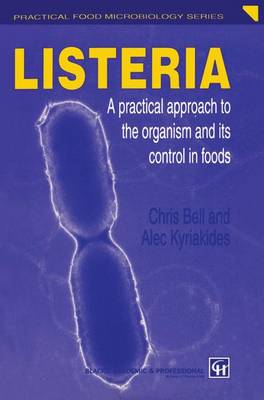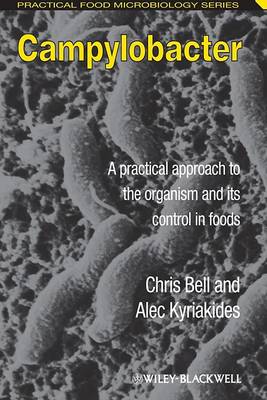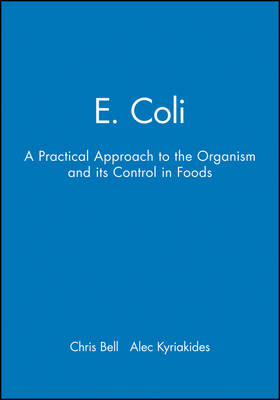Practical Food Microbiology
4 total works
The Practical Food Microbiology Series gives practical and accurate information about specific organisms of concern to public health. The information is designed for use by those in the food industry working in manufacturing, retailing and quality assurance, those in associated professional sectors e.g. public health, and students in each of these areas. Clostridium botulinum produces a toxin which causes the severe, often fatal illness, botulism. It is a potential hazard associated with a wide range of both ambient stable and chilled foods. Foodborne botulism still occurs all around the world. As new outbreaks are reported implicating yet more food types and food processes, so the food industry needs to regularly review processes and product characteristics to assure safety.
The independent investigations some 70 years ago by E. G. D. Murray and colleagues in Cambridge (UK) and J,H. H. Pirie in Johannesburg (South Mrica) resulted in the first detailed descriptions of listeriosis (in both instances in small animals), together with the isolation and naming of Lis teria monocytogenes. These descriptions in 1926 and 1927 show the pre cision and care of these experimentalists, for not only did they show much skill and attention to detail but also great insight in surmising that the consumption of contaminated food was associated with the trans mission of listeriosis. In the words of Pirie in 1927, 'Infection can be pro duced by subcutaneous inoculation or by feeding and it is thought that it is by feeding that the disease is spread in nature. ' These observations were largely forgotten and listeriosis was regarded as a rather obscure disease of animals and occasionally humans. However, the 1980s saw dramatic changes and the 'elevation' of Listeria to a topic of concern not only amongst microbiologists (particularly food micro biologists) but also the general public.
"The text is well written and amply interspaced with tables so that it is very informative and not too heavy to read, which is an almost unique combination in scientific books!" -International Poultry Production, Volume 18, Number 1, and International Food Hygiene, Volume 20, Number 7 The records of human gastrointestinal illness gathered by national and international bodies concerned with matters relating to public health clearly demonstrate that Campylobacter spp. are the most frequently identified bacteria causing infectious intestinal disease. This new book provides up to date information about the species of Campylobacter most often associated with food poisoning, namely C. jejuni and C. coli . Like Salmonella spp., Campylobacter spp. are zoonotic agents. Many different domestic and wild animal, avian, and also insect reservoirs of these organisms have been identified. They are also widespread in the environment and have been found to survive in both soil and natural waters. Part of the authors' Practical Food Microbiology Series , which includes books covering Listeria monocytogenes , E. coli , Clostridium botulinum and Salmonella spp., this book again offers a practical treatment of Campylobacter spp.
, drawing on real-life cases to highlight effective means of controlling these pathogenic microorganisms in foods. Each volume in the series has been devised to provide practical and accurate information about specific microorganisms of concern to public health. This new book includes information concerning the taxonomy of Campylobacter spp. and methods used for their isolation and characterisation, the illnesses caused by them, the occurrences of outbreaks of illness and their investigation, and the lessons that can be learnt from these. Also discussed are the sources of these organisms, routes by which they may contaminate foods, factors affecting their survival and growth and, importantly, means for the control of Campylobacter spp. and their subsequent impact on public health. The information in this book is designed for use by those in the food industry working in manufacturing, retailing and quality assurance and those in associated professional sectors, e.g. health, and students in each of these areas. This book is an invaluable tool and essential reference for all food microbiologists.
, drawing on real-life cases to highlight effective means of controlling these pathogenic microorganisms in foods. Each volume in the series has been devised to provide practical and accurate information about specific microorganisms of concern to public health. This new book includes information concerning the taxonomy of Campylobacter spp. and methods used for their isolation and characterisation, the illnesses caused by them, the occurrences of outbreaks of illness and their investigation, and the lessons that can be learnt from these. Also discussed are the sources of these organisms, routes by which they may contaminate foods, factors affecting their survival and growth and, importantly, means for the control of Campylobacter spp. and their subsequent impact on public health. The information in this book is designed for use by those in the food industry working in manufacturing, retailing and quality assurance and those in associated professional sectors, e.g. health, and students in each of these areas. This book is an invaluable tool and essential reference for all food microbiologists.



